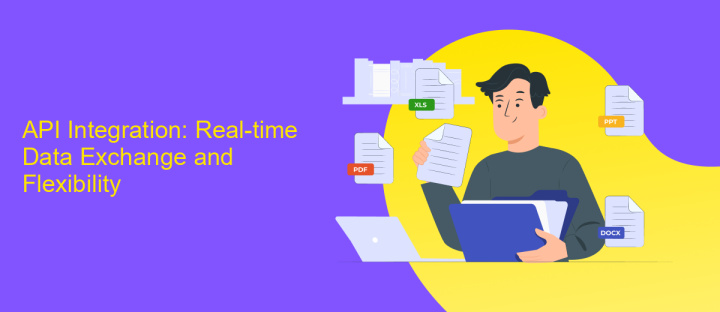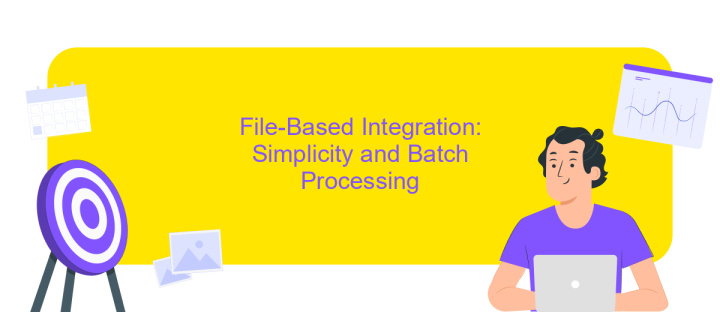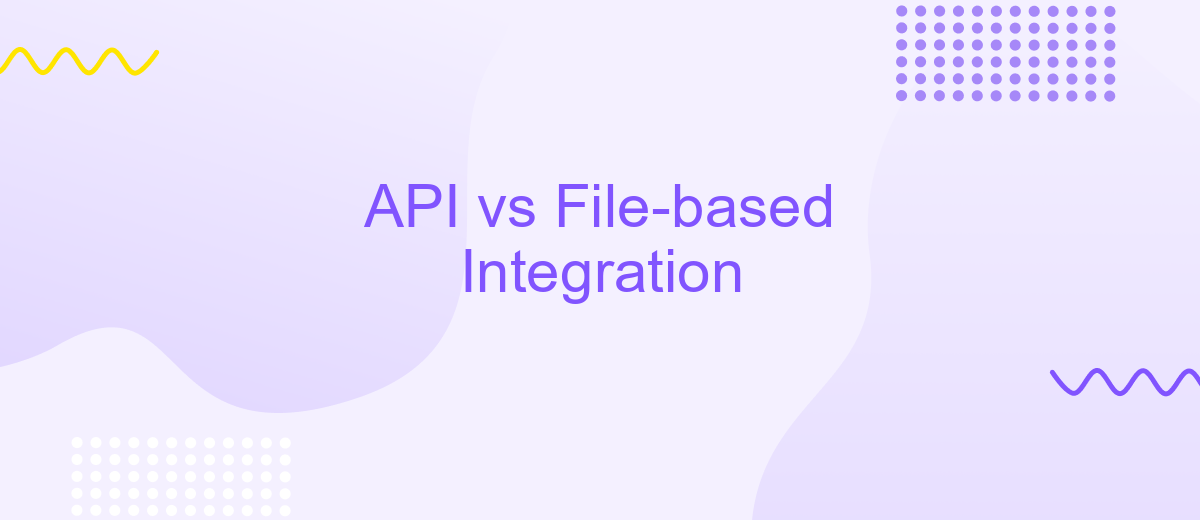API vs File-based Integration
In the rapidly evolving landscape of digital transformation, businesses are continually seeking efficient ways to integrate their systems and applications. Two prominent methods have emerged: API-based and file-based integration. This article explores the key differences, benefits, and challenges of each approach, providing insights into how organizations can leverage these technologies to enhance connectivity, streamline operations, and drive innovation.
Introduction: Setting the Stage for Integration
In the rapidly evolving digital landscape, businesses constantly seek efficient ways to integrate their systems and applications. Two dominant methods have emerged: API-based integration and file-based integration. Each approach offers distinct advantages and challenges, making it crucial for organizations to understand their differences and select the right strategy for their needs. This discussion aims to shed light on these integration methods, providing a foundation for informed decision-making.
- API-based Integration: Facilitates real-time data exchange and seamless connectivity between systems.
- File-based Integration: Relies on batch processing and is often simpler to implement for legacy systems.
- Scalability and Flexibility: APIs typically offer greater scalability, while file-based methods might be more rigid.
Understanding the nuances of API versus file-based integration is essential for organizations aiming to optimize their operations and enhance data flow. As businesses grow and technology evolves, the demand for robust integration solutions becomes increasingly critical. By exploring these integration methods, companies can align their technological infrastructure with their strategic goals, ensuring seamless operations and fostering innovation.
API Integration: Real-time Data Exchange and Flexibility

API integration offers a dynamic approach to data exchange, enabling real-time communication between systems. Unlike file-based integration, which relies on scheduled data transfers, APIs allow for instantaneous data updates, ensuring that information is always current. This real-time capability is crucial for businesses that require up-to-the-minute data to make informed decisions. For example, e-commerce platforms can immediately update inventory levels across all sales channels, preventing overselling and enhancing customer satisfaction. Moreover, APIs provide a scalable solution, easily accommodating increased data flow as business needs grow.
The flexibility of API integration is another significant advantage, allowing businesses to customize their data interactions according to specific requirements. APIs can be tailored to connect various applications seamlessly, supporting a wide range of operations from simple data retrieval to complex workflows. Services like ApiX-Drive facilitate this process by offering user-friendly platforms to configure and manage integrations without extensive coding knowledge. This empowers businesses to streamline their operations, reduce manual data handling, and improve overall efficiency. Ultimately, API integration not only enhances data exchange but also provides the agility needed to adapt to evolving business landscapes.
File-Based Integration: Simplicity and Batch Processing

File-based integration offers a straightforward approach to data exchange by utilizing files as the primary medium for transferring information between systems. This method is often favored for its simplicity, as it requires minimal setup and can easily handle large volumes of data. Organizations can rely on existing infrastructure, such as file servers, to facilitate this type of integration, reducing the need for complex middleware solutions.
1. Batch Processing: File-based integration is ideal for batch processing, where data is collected, processed, and transferred in bulk at scheduled intervals.
2. Cost-Effective: It leverages existing file systems, making it a cost-effective solution for many organizations.
3. Compatibility: This method is compatible with various systems, as most platforms can read and write files in common formats like CSV or XML.
4. Reliability: File-based integration can be more reliable in environments with unstable network connections, as files can be queued and processed once connectivity is restored.
Despite its advantages, file-based integration may not be suitable for real-time data exchange due to inherent delays in batch processing. However, for applications that do not require immediate data updates, this method provides a robust and reliable solution. It remains a popular choice for businesses that prioritize simplicity and cost-efficiency in their integration strategy.
Choosing the Right Approach: Key Considerations and Comparison

When deciding between API and file-based integration, understanding the specific needs of your project is crucial. APIs offer real-time data exchange, enabling seamless communication between applications. This approach is ideal for dynamic environments where immediate data updates are essential. Conversely, file-based integration is often simpler to implement and can be more cost-effective for batch processing tasks.
Consider the complexity of your systems and the frequency of data exchange. APIs are better suited for complex, interconnected systems requiring continuous data flow. File-based integration, however, may suffice for less dynamic environments with periodic data transfers. Evaluating these factors will guide you towards the most efficient integration method.
- Data Volume: High volumes may favor APIs for efficiency.
- Latency: APIs offer lower latency for real-time needs.
- Security: Both methods require robust security measures.
- Scalability: APIs generally provide better scalability options.
Ultimately, the choice between API and file-based integration depends on your organization's specific requirements. Assessing the nature of your data interactions, budget constraints, and long-term goals will help you determine the most suitable approach for your integration strategy.
- Automate the work of an online store or landing
- Empower through integration
- Don't spend money on programmers and integrators
- Save time by automating routine tasks
Conclusion: Embracing the Future of System Integration
As organizations continue to evolve, the choice between API and file-based integration becomes increasingly pivotal in shaping their digital landscapes. APIs offer real-time data exchange, seamless connectivity, and adaptability, making them ideal for dynamic business environments. In contrast, file-based integration provides simplicity and reliability for batch processing, making it suitable for legacy systems and less time-sensitive applications. Companies must assess their specific needs, considering factors such as data volume, frequency, and system compatibility, to make informed decisions.
Embracing the future of system integration involves leveraging tools that simplify and enhance these processes. Platforms like ApiX-Drive empower businesses to automate and streamline integrations without extensive technical expertise. By providing an intuitive interface and robust functionality, ApiX-Drive bridges the gap between disparate systems, enabling organizations to focus on innovation and growth. As technology advances, the synergy between API and file-based methods will continue to evolve, requiring businesses to remain agile and adaptive in their integration strategies.
FAQ
What is the main difference between API and file-based integration?
When should I choose API integration over file-based integration?
What are the advantages of file-based integration?
How can I automate integrations between different systems?
Is security a concern in API and file-based integrations?
Apix-Drive is a simple and efficient system connector that will help you automate routine tasks and optimize business processes. You can save time and money, direct these resources to more important purposes. Test ApiX-Drive and make sure that this tool will relieve your employees and after 5 minutes of settings your business will start working faster.


